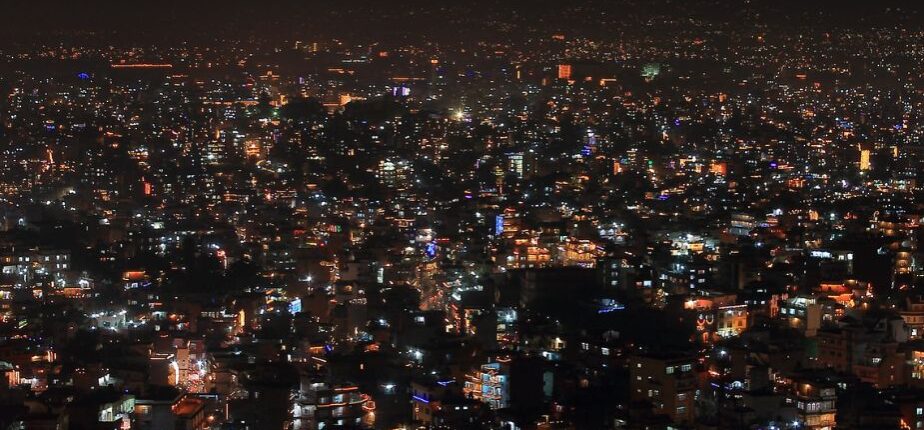Explore Natural Nepal and Experience the Magic of the Tihar Festival


Experience the Magic of the Tihar Festival is a unique opportunity that some lucky travelers may experience. Besides Tihar, there are many other festivals celebrated by each ethnic group. However, the Tihar festival is celebrated by the majority of communities.
Travelers from all over the world come to Nepal to witness its unmatched landscapes and to experience the charm of its festivals. Among these festivals, Tihar – the festival of lights – stands out as one of the most vibrant and culturally rich celebrations, offering an unforgettable experience for travelers.
The Wonders of Nepal’s Natural Beauty
Nepal’s landscape is as diverse as its culture. The country stretches from the towering peaks of the Himalayas in the north to the subtropical plains of the Terai in the south. This range of elevations creates stunning biodiversity and unique ecosystems, making Nepal a paradise for nature lovers and adventure seekers alike.
-
The Himalayas and Trekking
Known as the “Roof of the World,” Nepal is home to eight of the world’s fourteen highest peaks, including the majestic Mount Everest. Popular trekking routes like the Everest Base Camp, Annapurna Circuit, and the remote Mustang region attract thousands of trekkers each year. These trails offer panoramic mountain views, hidden valleys, and encounters with the local communities who have thrived in these highlands for centuries. For those who crave off-the-beaten-path adventures, the Mundum Trail in eastern Nepal offers a unique trekking experience through lush green hills, vibrant local villages, and sacred cultural sites of the Kirant community.
-
National Parks and Wildlife
Nepal boasts a network of national parks and reserves that protect its incredible wildlife. Chitwan National Park, located in the Terai region, is a UNESCO World Heritage Site and home to Bengal tigers, one-horned rhinos, elephants, and countless bird species. Further west, Bardiya National Park offers a more rugged wilderness experience with opportunities to spot wild elephants and the elusive Gangetic dolphin. For bird lovers, Koshi Tappu Wildlife Reserve is a haven for migratory birds and a must-visit during the winter season.
-
Lakes and Valleys
In addition to its mountains and forests, Nepal is blessed with pristine lakes like Phewa Lake in Pokhara, Rara Lake in Mugu, and Tilicho Lake, one of the highest in the world. The Pokhara Valley, surrounded by the Annapurna range, is a favorite among travelers for its serene lakes, paragliding adventures, and laid-back atmosphere.
Experience the Magic of the Tihar Festival

Tihar, also known as the Festival of Lights, is celebrated each autumn, usually in October or November. The festival lasts for five days and is dedicated to various gods, animals, and, ultimately, to family. Each day of Tihar holds unique significance and traditions that highlight the deep connection between people, nature, and spirituality in Nepalese culture.
-
Day 1 – Kaag Tihar (Crow Worship)
The first day of Tihar is dedicated to crows, believed to be messengers of the gods. People leave food outside for crows as a gesture of respect, which is thought to bring good fortune and keep bad omens at bay.
-
Day 2 – Kukur Tihar (Dog Worship)
Dogs, seen as guardians and loyal companions, are honored on the second day. People place garlands around their necks and apply tika (a sacred red mark) on their foreheads as a sign of respect and gratitude. Witnessing this tradition is heartwarming as it reflects the value placed on all beings in Nepalese culture.
-
Day 3 – Gai Tihar and Laxmi Puja (Cow Worship and Wealth Celebration)
On the third day, cows are worshipped as symbols of prosperity and fertility, receiving garlands and tika. The evening is dedicated to Laxmi, the goddess of wealth, with households lighting oil lamps, candles, and decorative lights to invite prosperity and good fortune for the coming year. Streets and homes sparkle, creating a magical atmosphere that delights locals and visitors alike.
-
Day 4 – Govardhan Puja and Mha Puja
The fourth day of Tihar varies according to regional practices. In some communities, it’s dedicated to oxen, and in others, it is celebrated as Mha Puja, a day of self-reflection and thanksgiving among the Newar community in Kathmandu Valley.
-
Day 5 – Bhai Tika (Brother-Sister Bond)
The final day of Tihar is a special day for siblings. Sisters apply a protective tika to their brothers’ foreheads and exchange gifts, symbolizing the love and bond between them. This touching tradition adds a beautiful layer of intimacy to the festival and offers a glimpse into the importance of family ties in Nepalese society.
How to Celebrate Tihar as a Visitor
Travelers visiting Nepal during Tihar can experience the festival alongside local families and communities. Here are a few ways to immerse yourself:
- Join Local Celebrations: Many families welcome guests to participate in Tihar rituals, especially in more rural areas. Staying in a homestay allows you to be part of these celebrations and to learn about the symbolism behind each ritual.
- Photograph the Festival of Lights: The vibrant colors, decorative lights, and traditional oil lamps make Tihar a photographer’s dream. Explore the streets in the evening to capture the beautifully decorated houses and temples.
- Try Traditional Foods: Tihar brings a range of special delicacies, from sel roti (a sweet, ring-shaped rice bread) to sweets made of coconut, sesame, and jaggery. Don’t miss the opportunity to try these festive treats, which are usually homemade and packed with flavor.
Nepal – Where Nature and Culture Meet
Exploring Nepal’s landscapes and festivals like Tihar enriches one’s understanding of the harmony that Nepalese people hold with nature and spirituality. The vast mountains, dense jungles, and pristine lakes provide ample opportunity for outdoor adventure, while festivals like Tihar add a vibrant, cultural dimension to any visit.
For travelers seeking a journey that combines natural splendor with a profound cultural experience, Nepal during Tihar is the ultimate destination. This celebration of lights, life, and love will leave you with unforgettable memories and a deep appreciation for Nepal’s remarkable traditions.







